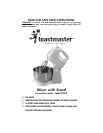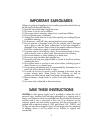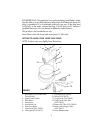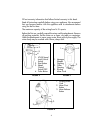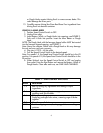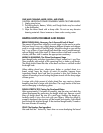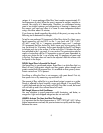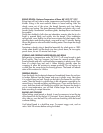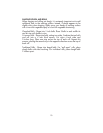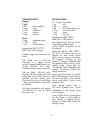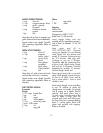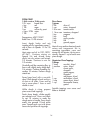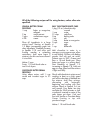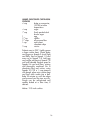9
RISING DOUGH: Optimum Temperature of Room 80°-85°F/27°-29°C
Rising times will vary due to recipe, temperature and humidity level of your
kitchen. Rising is the most essential feature in bread making. After the
dough comes out of the mixer, the dough ferments and rises before
punching and resting. The gluten becomes pliable and elastic with a soft,
smooth quality. Fermentation conditions gluten, develops flavor and leavens
the product.
Dough has doubled in bulk when an indentation remains after the tip of a
finger is pressed lightly and quickly into the dough. If the indentation
springs back, cover and let rise a few more minutes and check again. After
punching down and dividing dough, cover and let rest 10 minutes. Resting
allows the gluten to relax and makes handling easier. Then shape the dough
as desired.
Sometimes a dough rising is beneficial especially for whole grain or 100%
whole wheat bread. Let the dough rise once, punch down, let rise again,
punch down, let rest 10 minutes and shape.
STORING AND FREEZING BAKED BREADS AND ROLLS
Refrigeration or temperatures under 70°F/21°C will cause breads to stale
(firm) quickly. They can, however, be frozen for several months. When
freezing breads and rolls, cool them before wrapping in plastic wrap. Place
them in a plastic bag and seal it. When thawing, partially open the
wrapping to allow the moisture to escape gradually. Do not remove ice
crystals from the wrap during the thawing process. The bread will absorb
some of this moisture as it thaws.
FREEZING DOUGH
Form the dough into the desired shape and immediately freeze for one hour
to harden. Remove from the freezer and wrap in plastic wrap. Next place
it in a plastic bag and seal. Dough can be kept in the freezer for up to four
weeks. Thaw the dough in a plastic bag in the refrigerator overnight or for
several hours. Unwrap and place on baking pan. Cover and let stand in a
warm, draft-free place until double the original size. Because the dough is
not at room temperature, you will find it takes longer than usual to rise.
Bake according to recipe instruction.
BAKING AND COOLING
When baking sweet breads or braids, it may be necessary to tent the top
of the bread with foil for the last 5-10 minutes. To tent, place a piece of foil,
shiny side up, over the loaf. This will avoid over browning while the bread
continues baking.
Cool baked bread in a draft-free area. To prevent soggy crust, cool on
racks. Wait 20 minutes before cutting hot bread.



